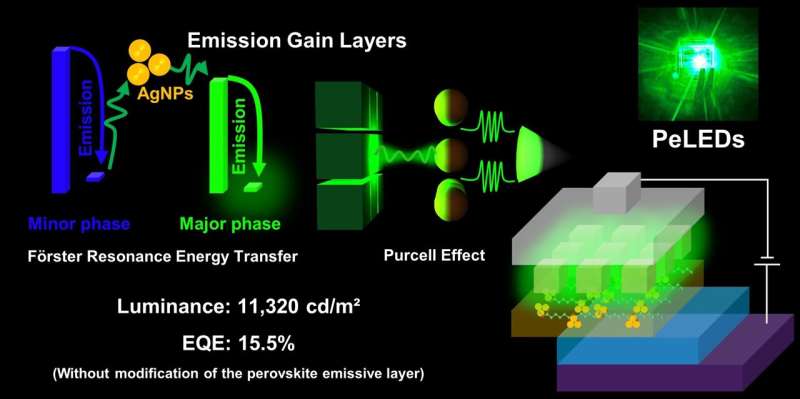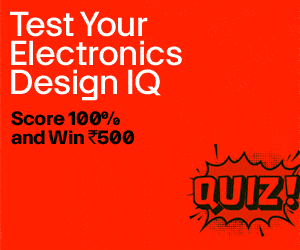This innovation, driven by Förster resonance energy transfer (FRET) and the Purcell effect, promises to revolutionise high-performance displays, optical communication, and quantum photonics—offering a cost-effective, scalable solution for the future of PeLED technology.

Researchers have developed a novel method to significantly improve the efficiency of perovskite light-emitting diodes (PeLEDs) without altering the perovskite emissive layer. By incorporating polycaprolactone-silver nanoparticles (PCL@AgNPs-P) as an emission gain layer, the team achieved remarkable improvements in luminance and external quantum efficiency (EQE). This innovation leverages Förster resonance energy transfer (FRET) and the Purcell effect, opening new possibilities for high-performance PeLEDs and advanced laser optics applications.
PeLEDs have gained traction in recent years due to their superior optoelectronic properties. However, most efficiency-enhancing strategies involve modifying the perovskite emissive layer through doping or structural adjustments, often at the cost of manufacturing stability and increased production expenses. This study presents an alternative that maintains the purity and stability of the perovskite layer while simplifying the fabrication process.
The researchers utilized microwave-assisted post-addition technology to develop a symbiotic emission gain layer composed of polycaprolactone and silver nanoparticles. This layer enhances PeLED performance through two primary mechanisms:
- Energy Transfer Enhancement: The emission gain layer absorbs energy from low-dimensional perovskite (minor phase) and transfers it to high-dimensional perovskite (major phase), increasing the radiative intensity of the primary emissive phase.
- Purcell Effect Enhancement: The presence of silver nanoparticles creates a cavity-like optical structure that boosts the spontaneous emission rate, leading to higher electroluminescence (EL) intensity.
According to the findings, PeLEDs integrated with the PCL@AgNPs-P emission gain layer achieved a luminance of 11,320 cd/m² and an EQE of 15.5%, significantly outperforming devices without the layer. Additionally, they exhibited stable green emission purity and a narrow emission spectrum of 94 meV across various operating currents.
The study, led by Dr. Ru-Jong Jeng from National Taiwan University and Dr. Chi-Ching Kuo from National Taipei University of Technology, offers a promising direction for next-generation PeLED applications. This breakthrough could drive advancements in high-performance displays, optical communication, laser optics, and quantum photonics, providing a cost-effective and scalable solution for PeLED development.







